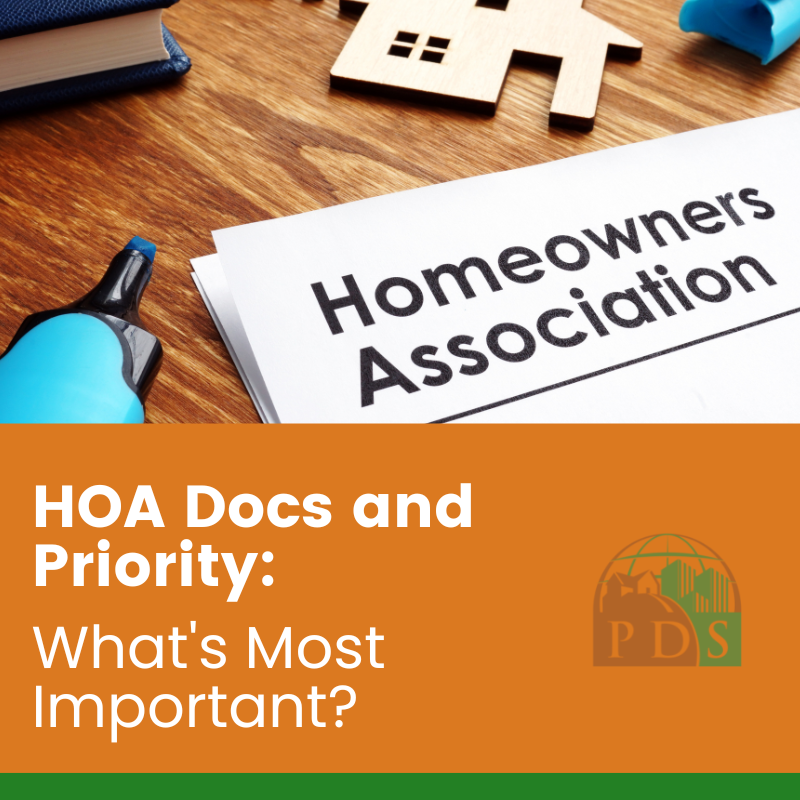
HOA Docs and Priority: What’s Most Important?
The sheer number of documents, rules, and regulations that govern HOAs can be downright overwhelming and confusing for HOA Board members and community homeowners alike! In order to avoid misunderstandings at to which rules or standards apply when, it is important to understand which governing documents take priority for your HOA.
HOA Documents: The Chain of Command
There are a lot of rules and regulations that apply to your HOA. But they all come from different documents that were written at different times by different groups of people. As a result, community homeowners and Board members alike may find discrepancies between some of these documents, so it is important to know and understand which documents take precedence.
- Government Laws
State and federal laws will always prevail over any other governing documents for your HOA. Federal laws will always rank highest over anything else, with state and then local laws following closely behind. The bottom line is that no bylaws or other rules and regulations of your HOA can supercede federal, state, or local laws. Any provision in your community rules that is in conflict with already enacted laws is not enforceable in any way.
- County Plat Records
When your subdivision or community was created, a plan or map was recorded with the county. This plat provides information regarding the area of each unit of property, any easements or setback requirements, and the maintenance responsibilities for each property location. The county records may also give information regarding trash enclosures, restrictions on access for certain types of vehicles, and lighting requirements.
- Covenants, Conditions, and Restrictions (CC&Rs)
Coming in third in terms of document hierarchy, is CC&R. This is the Declaration of Covenants, Conditions and Restrictions that delineates the responsibilities and rights of both homeowners and HOA Board members. The CC&R also details maintenance responsibilities, assessment procedures, and the enforcement authority for the community. It also provides the process for handling any issues that may arise in terms of community disputes and violations.
- HOA Bylaws
Your community’s bylaws provide the information about how your specific HOA functions. The bylaws contain the particulars of how your association is run, such as when and how meetings are held, who has voting rights, and who can serve on the HOA Board. You can always request a copy of the bylaws from your HOA Board or your HOA Community Manager.
- The Three Rs: Rules, Regulations, and Resolutions
Whereas the CC&Rs govern the overall procedures and responsibilities of the community and the HOA Board, rules and regulations have to do with daily types of issues such as pool and clubhouse use, pet restrictions and responsibilities, what colors of paint can be used on homes, and what sort of landscaping is or isn’t permitted.
For further assistance in understanding HOA documents and how they impact you, feel free to check with your Community Manager or reach out to us at PDS with any questions you may have.
